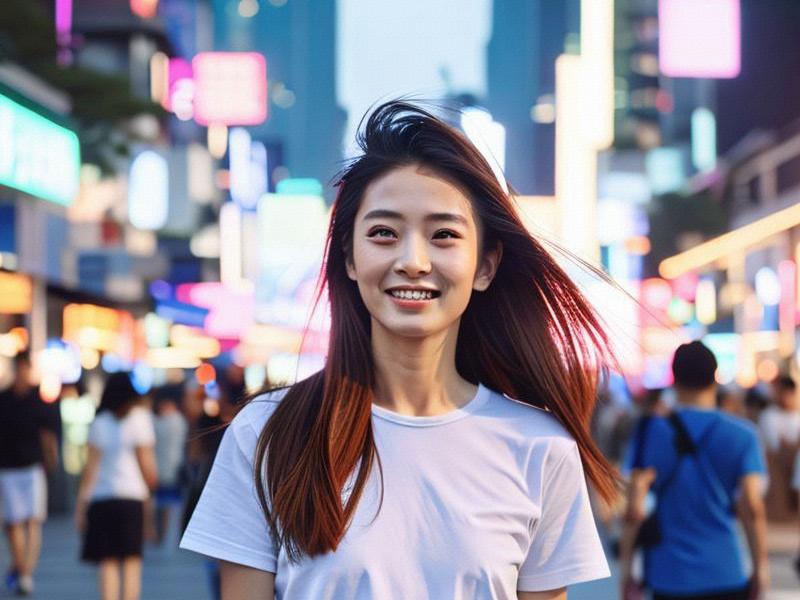Shanghai, a city that has long been a beacon of elegance and sophistication in China, is not just a place on the map but a living, breathing testament to the evolution of beauty standards. Its beauty culture, deeply rooted in history, is a dynamic blend of traditional aesthetics and modern trends, reflecting the city's unique position as a hub of commerce, culture, and innovation. This article delves into the multifaceted beauty culture of Shangh

Shanghai's beauty culture is a story that begins in the early 20th century, during the height of the International Settlement. This era saw the emergence of Shanghai as a cosmopolitan city, attracting people from all over the world. The city's cosmopolitan nature brought with it a rich tapestry of cultural influences, which significantly shaped its beauty standards. The women of Shanghai during this period were known for their impeccable fashion sense and their use of traditional Chinese cosmetics, such as rice powder and rouge, alongside Western-style makeup.
The Bund, with its opulent architecture and vibrant nightlife, became the epicenter of Shanghai's beauty culture. Here, women adorned themselves in qipao, the traditional Chinese dress, often embellished with intricate embroidery and modern Western designs. The qipao became a symbol of Shanghai's unique blend of tradition and modernity, reflecting the city's beauty ideals.
The influence of Western aesthetics on Shanghai's beauty culture cannot be overstated. As Shanghai opened up to the world, it became a melting pot of cultures, with Western fashion and beauty trends quickly gaining popularity. The city's women began to adopt Western-style makeup, including lipstick, eyeliner, and foundation, which were previously unheard of in traditional Chinese beauty practices. This fusion of Eastern and Western aesthetics created a new beauty standard that was both innovative and inclusive.
One of the most significant developments in Shanghai's beauty culture was the rise of local beauty brands. In the 1920s and 1930s, Shanghai became the birthplace of several iconic beauty brands, such as Shanghai Soap and Lao Feng Xiang. These brands combined traditional Chinese ingredients with modern manufacturing techniques to crteeaproducts that were uniquely Shanghai. The success of these brands not only established Shanghai as a leader in the beauty industry but also reinforced the city's reputation for innovation and quality.
上海龙凤419足疗按摩
The Communist Revolution in 1949 brought significant changes to Shanghai's beauty culture. The emphasis on egalitarianism and the rejection of bourgeois lifestyles led to a decline in the popularity of Western-style beauty practices. Traditional Chinese beauty standards, which emphasized natural looks and simplicity, became the norm. However, the city's beauty culture did not disappear; it evolved, adapting to the new political and social realities.
In the改革开放新时代 (new era of reform and opening up - Since the reform and opening up), Shanghai's beauty culture has experienced a renaissance. The city's economic boom and increasing global influence have created a vibrant and diverse beauty scene. Today, Shanghai is home to a wide range of beauty brands, from international luxury labels to innovative local startups. The city's beauty culture is characterized by its inclusivity, reflecting the diverse population and the global trends that shape it.
One of the most striking aspects of Shanghai's modern beauty culture is the emphasis on individuality and self-expression. Unlike the more uniform beauty standards of the past, today's Shanghai women are encouraged to embrace their unique features and personal style. This shift is reflected in the city's fashion and beauty trends, which are constantly evolving and influenced by a global network of designers, influencers, and beauty experts.
上海品茶论坛
The rise of social media has also played a significant role in shaping Shanghai's beauty culture. Platforms like WeChat, Instagram, and TikTok have become powerful tools for beauty brands and influencers to connect with consumers. Shanghai's beauty scene is highly visual, with a strong emphasis on photography and videography. This visual culture has created a new language of beauty, where aesthetics and storytelling go hand in hand.
In addition to its vibrant consumer beauty scene, Shanghai is also a hub for beauty education and research. The city is home to several prestigious beauty schools and research institutions, which attract students and professionals from around the world. These institutions play a crucial role in advancing the field of beauty, fostering innovation, and promoting best practices.
The Shanghai Beauty Expo is one of the most important events in the city's beauty calendar. This annual event brings together beauty brands, industry experts, and consumers from around the globe, showcasing the latest trends, products, and technologies. The Expo is a testament to Shanghai's status as a global leader in the beauty industry, highlighting the city's commitment to innovation and excellence.
上海贵族宝贝sh1314
Shanghai's beauty culture is not without its challenges. The fast-paced nature of the beauty industry, coupled with the pressure to conform to unrealistic beauty standards, can be daunting for many. However, the city's beauty scene is also a source of inspiration and empowerment, offering a platform for individuals to express their creativity and individuality.
The future of Shanghai's beauty culture looks bright, with new trends and innovations on the horizon. The city's beauty industry is poised for continued growth, driven by increasing consumer demand, technological advancements, and a commitment to sustainability. As Shanghai continues to evolve, its beauty culture will remain a dynamic and influential force, reflecting the city's unique spirit and global reach.
In conclusion, Shanghai's beauty culture is a rich and complex tapestry, woven from threads of history, tradition, and modernity. It is a testament to the city's resilience and adaptability, as well as its commitment to innovation and excellence. Whether through the timeless elegance of the qipao, the innovative products of local beauty brands, or the vibrant beauty scene of today, Shanghai's beauty culture continues to captivate and inspire, embodying the city's enduring allure.